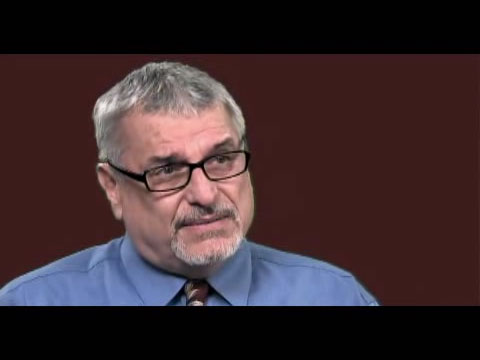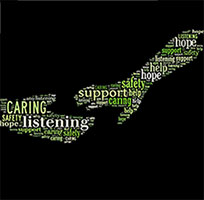Intervention Guidelines

Rick Mogil
The guidelines below were developed to help your district or school crisis team intervene with self-injurous youth.
Download PDFIntervening with Self-Injurious Youth*
General Interventions for Crisis Teams
-
Dispel myths:
Self-injury (SI) is a complex bio-psychosocial phenomenon, separate and distinct from suicide. Cognitive, affective, behavioral, biological, psychological, and environmental factors combine to produce the behavior and must be addressed in any treatment plan. Counseling can be effective when focused on reducing the cognitive thoughts and environmental factors that trigger SI.
-
Crisis preparedness:
Educate and train staff in warning signs of SI. Develop referral procedures and resources at your school site. You may also work with your Local County Office of Education to get updated mental health resources.
Procedures for School Mental Health Personnel
- Assess for suicide risk. While students who self-injure are generally low risk for suicide, they often have complex mental health histories.
- Warn and involve parents if active wounds appear or student assesses at any risk level for suicide.
- Utilize school and community resources. Tighten the circle of care by obtaining appropriate signed releases of information.
- Document all actions.
- Encourage appropriate coping and problem-solving skills, do not discourage self-harm.
- Identify caring adults at school and appropriate replacement skills utilizing safety plans.
- Teach substitute positive behaviors (e.g. rubber bands, ice), communication skill building (journaling, help-seeking behavior), reduction of tension (exercise/stress management), limiting isolation, regulation of emotions, and distress tolerance.
Signs of Self-Injury
- Frequent or unexplained bruises, scars, cuts, or burns.
- Consistent, inappropriate use of clothing designed to conceal wounds (often found on the arms, thighs, and abdomen).
- Secretive behaviors, such as spending unusual amounts of time in the student bathroom or isolated areas on campus.
- Bruises on the neck, headaches, and red eyes; ropes, clothing, and belts tied in knots (signs of the “Choking Game”).
- General signs of depression, social-emotional isolation and disconnectedness.
- Possession of sharp implements (razor blades, shards of glass, thumb tacks, clips).
- Evidence of self-injury in work samples, journals, art projects, and social media posts.
- Risk-taking behaviors such as gun play, sexual acting out, jumping from high places, or running into traffic.
Suggestions for School Personnel: Do
- Connect with compassion, calm, and caring.
- Understand that this is the student’s way of coping with pain.
- Refer and offer to go with the student to your school counselor, psychologist, social worker, or nurse.
- Encourage participation in extracurricular activities and outreach in the community (e.g. volunteering with animals, nursing homes, tutoring, or mentoring).
- Discover the student’s strengths.
Suggestions for School Personnel: Don't
- Discourage self-injury, threaten hospitalization, use punishment, or negative consequences.
- Act shocked, overreact, or say or do anything to cause guilt or shame.
- Publicly humiliate the student or talk about their SI in front of class or peers.
- Agree to hold SI behavior confidential.
- Make deals or promises you can’t keep in an effort to stop SI.
Suggestions for School Personnel to Limit Contagion
- SI behaviors are imitated and can spread across grade levels, schools/campuses, clubs, and peer groups.
- Each student should be assessed and triaged individually. If the activity involves a group “rite of togetherness,” the peer group should be identified and each student interviewed separately. When numerous students within a peer group are referred, assessment of every student will often identify an “alpha” student whose behaviors have set the others off. The “alpha” student should be assessed for more serious emotional disturbance. While most students participating in a group event will assess at low risk, identifying moderate and high-risk students and targeting them for follow up is critical.
- Respond individually but try to identify friends who engage in SI.
- School mental health professionals should refrain from running specific groups that focus on cutting rather focusing on themes of empowerment, exercise, tension relief and grief resolution.
- Health educators should reconsider the classroom presentation of certain books, popular movies, and music videos that glamorize such behaviors and instead seek appropriate messages in the work of popular artists.
- Monitor the internet chat, social media posts, and websites.
- SI should not be discussed in detail in school newspapers or other student venues. This can serve as a trigger for individuals who self-injure.
- Those who self-injure should be discouraged from revealing their scars because of issues of contagion. This should be discussed, explained, and enforced.
- Educators must refrain from school-wide communications in the form of general assemblies or intercom announcements that address SI.
- In general, the designated staff person should be clear with the student that although the facts of SI can be shared, the details of what is done and how, should not be shared as it can be detrimental to the well-being of the student’s friends.
- Prepare a re-entry plan. All students returning from mental health hospitalization should have a re-entry meeting where parents, school, and community mental health personnel make appropriate follow-up plans.
Suicide Attempt Survivors Resources
-
American Association of Suicidology - A Journey Toward Health and Hope
This handbook provided by the AAS helps suicide attempt survivors in their recovery providing hope for the future.
-
National Suicide Prevention Lifeline - Resources for Attempt Survivors
This website provides resources for attempt survivors.
Suicide Intervention Resources
Evidence-Based Interventions, Programs and Services
-
SAMHSA – NREPP
The Substance Abuse and Mental Health Services Administration’s (SAMHSA) National Registry of Evidence-based Programs and Practices (NREPP) endorses the implementation of scientifically established interventions.
-
HEARD Alliance
The HEARD Alliance is a community alliance of health care professionals in the San Francisco area that promote collaboration with educational professionals to enhance the well-being of and prevent suicide in adolescents. This website has a number of resources along with a toolkit for suicide prevention and intervention.
-
SPRC - A Comprehensive Approach to Suicide Prevention
The Suicide Prevention Resource Center is a national resource center focused on advancing the National Strategy for Suicide Prevention. This resource gives a comprehensive view of suicide prevention.
Information Resource
-
NASP Resource – Guidelines for Administrators and Crisis Teams
This National Association of School Psychologists resource has guidelines for administrators and crisis teams on suicide intervention and postvention.

Toolkit for Health Promotion and Suicide Prevention
This Toolkit, from the Health Care Alliance for Response to Adolescent Depression, assists schools with promoting mental health, intervening in a mental health crisis, and supporting members of a school community after a loss to suicide.
Suicide Prevention Resources
Maintaining a Positive School Climate
-
Positive Behavior Interventions and Supports
This is the Technical Assistance Center on Positive Behavioral Interventions and Supports. This website provides information for school districts on school climate and universal, targeted, and intensive behavioral supports for students.
Suicide Awareness Activities
-
Know the Signs
Know the Signs is a California social marketing campaign emphasizing three key messages: “Know the signs. Find the words. Reach out.” This link takes you to resources and offers assistance to help increase knowledge of warning signs of suicide.
High School Clubs
-
National Alliance on Mental Illness On Campus (NAMI OC)
The National Alliance on Mental Illness is a mental health organization focused on building better lives for those affected by mental illness. NAMI OC high school clubs are student-led clubs that raise mental health awareness and reduce stigma through peer-led education and campus activities.
Mental Health Awareness
-
Each Mind Matters
Each Mind Matters is California’s mental health movement. This website includes resources and information to create your school’s campaign to raise awareness and reduce stigma associated with mental health disorders. This is important since many youth who experience suicidal thoughts also have a mental health issue.
Centers for Disease Control (CDC)
-
Preventing Suicide through Connectedness
The CDC Preventing Suicide through Connectedness resource assists schools with understanding the link between connectedness and suicide prevention.
Other Resources
-
Inclusive Anti-bullying Policies and Reduced Risk of Suicide Attempts in Lesbian and Gay Youth, Journal of Adolescent Health
This article examines the impact of anti-bullying policies that are inclusive of sexual orientation.
-
Resources and activities for children/youth and parents about internet safety
This website focuses on internet safety for schools and communities.
-
School-Wide Positive Behavior Support Resources to prevent Bullying
The Technical Assistance Center for Positive Behavior Interventions and Supports (PBIS) offers bullying prevention resources for schools.
-
Teaching Tolerance classroom activities and resources for schools
The Teaching Tolerance website offers diversity training and resources for schools.
-
The Youth Suicide Prevention School-Based Guide
A tool that provides a framework for schools to assess their existing or proposed suicide prevention efforts (through a series of checklists) and provides resources and information that school administrators can use to enhance or add to their existing program. Funded by the Institute of Child Health Policy at NOVA Southeastern University through a Florida Drug Free Communities Program Award.
-
Youth Suicide-Prevention Guidelines for California Schools
These guidelines are available to assist schools to develop and implement plans for youth suicide prevention, intervention, and aftermath. The guidelines blend information from a variety of expert sources and are intended to help school communities in their school planning and prevention efforts. Counseling, student support specialists, and local mental health specialists should be consulted for planning and implementing school plans or for individual student referrals regarding youth suicide.
-
NASSP – Promoting Mental Health in Middle Level and High Schools
This is a website resource from the National Association of Secondary School Principals.
-
American Foundation for Suicide Prevention
The American Foundation for Suicide Prevention is a website that provides resources and aid to those affected by suicide. This website has links specifically for educators.
-
Suicide Prevention Resource Center
The Suicide Prevention Resource Center website has tools and resources to assist educators in the prevention of suicide.
-
Coalition to Support Grieving Students
The Coalition to Support Grieving Students is a website that provides resources and training modules for educators to assist with supporting grieving students.
-
Didi Hirsch Mental Health Services
Didi Hirsch is committed to providing quality mental health and substance abuse services in communities where stigma and poverty limit access. Didi Hirsch provides resources and training in suicide prevention for educators and clinicians.
-
GLSEN
GLSEN (pronounced “glisten”) is a national education organization started by teachers dedicated to ensuring safe and affirming schools for LGBTQ+ students.
-
The Relationship Between Bullying and Suicide: What we Know and What it Means for Schools
This pamphlet from the CDC explains the relationship between bullying and suicide and provides information and resources for school personnel.
-
Asian American Suicide Prevention and Education
Provides educational flyers, brochures and information in English, Chinese, Korean, Japanese and Vietnamese.
-
Trevor Project
The Trevor Project is a leading national organization providing crisis intervention services to lesbian, gay, bisexual, transgender, queer and questioning youth under 25.
-
Welcomingschools.org
Welcomingschools.org is a professional development program providing training and resources to elementary school educators to embrace all families, create LGBTQ+ and gender inclusive schools, prevent bias-based bullying, and support transgender and non-binary students.